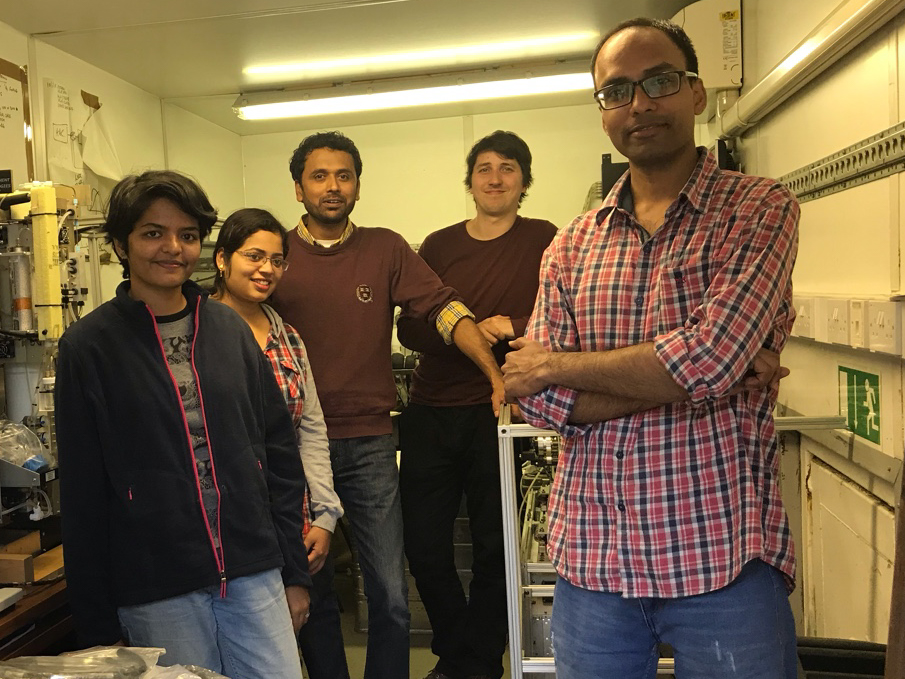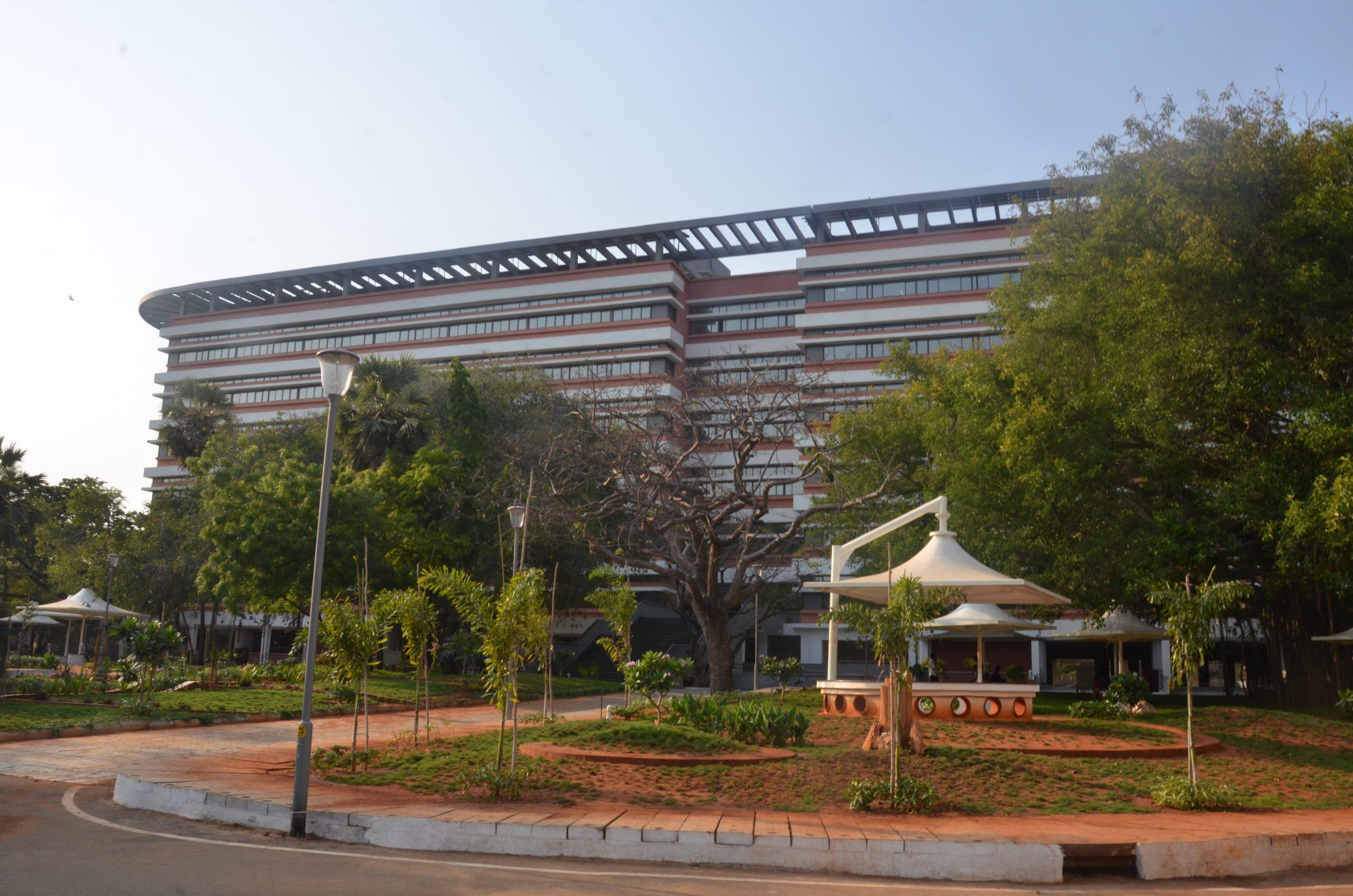Best Books to Read in 2023
Best Books to Read in 2023 Are you a bookworm or a bibliophile, if yes, then this is the ...
IIT M researchers have found the reason behind the low visibility in the national capital.
An international study taken up under the aegis of IIT M researchers found that Chloride rich particles were responsible for low visibility in New Delhi.

It is known that low visibility levels in national capital has been causing much concern for quite sometime now.
IIT M researchers have found Chloride to be the highest inorganic fraction in the particulate matter, primarily responsible for haze and fog formation in norther part of India which includes the national capital.
The study conducted by IIT M researchers has been published in a prestigious peer-reviewed International Journal Nature Geoscience.
A video featuring Dr. Sachin Gunthe of IIT Madras explaining the important findings of the study by IIT M researchers has been made.
The video is available on the link ‘https://fromsmash.com/Delhi-Pollution’
Studies have been taken up not only by IIT M researchers but also by many others in the past.
Those in the past have identified identified PM2.5 (particulate matter or aerosol particles with diameter less than 2.5 micrometre) as a major pollutant, responsible for haze and fog formation over Indo-Gangetic plain including Delhi.
However, the role of PM2.5 and detailed chemistry of haze and fog formation over national capital was poorly understood.
Such a lack of understanding was the biggest hurdle in developing the policies to improve the air quality and visibility.
The study by IIT M researchers greatly enhances the understanding about the precise role of PM2.5 in Chemistry of fog formation, which will help policy makers to frame better policies for improving the air quality and visibility over national capital.
With the approaching winter season, every year, most of the Indo Gangetic Plain invariably is engulfed in a dense fog and haze, particularly during the months of December and January.
Over the national capital dense fog negatively impacts the air and surface transport resulting in huge financial losses and jeopardise human lives.
Overall life comes to standstill during the dense fog, say IIT M researchers.
The study by IIT M researchers not only provides the scientific explanation for source of high chloride in PM2.5 mass over Delhi but also quantifies its role in haze and fog formation and visibility reduction.
 Study of IIT M researchers explains that complex chemical reactions involving Hydrochloric Acid (HCl), which is directly emitted in the atmosphere from plastic contained waste burning and few industrial processes, is primarily responsible for high PM2.5 chloride and subsequent haze and fog formation over Delhi during chilly winter nights.
Study of IIT M researchers explains that complex chemical reactions involving Hydrochloric Acid (HCl), which is directly emitted in the atmosphere from plastic contained waste burning and few industrial processes, is primarily responsible for high PM2.5 chloride and subsequent haze and fog formation over Delhi during chilly winter nights.
While previous researchers also have observed high chloride in PM2.5, the potential source of such a high chloride and if it played any role in haze and fog formation was a scientific mystery.
The study was conducted by IIT M researchers in collaboration with Max Planck Institute for Chemistry of Germany, Harvard University of USA, Georgia Institute of Technology (USA) and Machester University of UK.
Also read ‘Know how to make corrections in JEE Mains 2021 exam application from 27 to 30 January‘
IIT M researchers and others deployed state-of-the-art instruments to measure the chemical composition and other important properties of PM2.5, along with relative humidity and temperature in Delhi, which were operated round the clock for one month with extreme care and dedicated expertise.
The observations were then used in complex chemical models.
The findings were surprising for IIT M researchers and others and they unfolded the mystery of high chloride in PM2.5 and scientifically unravelled its precise role in fog and haze formation over Delhi.
 Dr. Sachin S. Gunthe, Associate Professor, Department of Civil Engineering, IIT Madras led the team of IIT Madras researchers.
Dr. Sachin S. Gunthe, Associate Professor, Department of Civil Engineering, IIT Madras led the team of IIT Madras researchers.
‘If overall PM2.5 mass burden over Delhi is much lower than polluted megacity Beijing, then why visibility reduction is major problem in Delhi?’ He asked.
Speaking further on the study taken up by IIT M researchers, Dr. Sachin Gunthe said he real challenge was to delineate the role of high chloride in visibility reduction.
The resolution of the mechanism was derived with the collaborative effort from all the partners in this project with various tools of analysis.
This study by IIT M researchers is a demonstration of a successful large scale scientific collaborations that are so vital for climate studies, said Dr. Sachin.
Speaking more about the study by IIT M researchers and others Professor R. Ravikrishna of Department of Chemical Engineering at IIT Madras said with the results from first couple of days, it was very clear to us that Delhi is different.
Generally for a polluted urban region like Delhi, one would expect sulfate to be highest inorganic fraction of particulate matter, said Professor Ravikrishna, who is also a part of IIT M researchers.
However, we found chloride to be the highest inorganic fraction of particulate matter, he said.
The HCl from various sources combines with ammonia, which is emitted in great amounts over this region.
Thus, ammonium chloride (NH4Cl) so formed condenses to aerosol and exponentially increase the water uptake ability of aerosol particles resulting increase in size, eventually leading to dense fog formation, say IIT M researchers.
In the absence of the excess chloride, the fog formation otherwise would be suppressed significantly.
Enhancement in understanding of water uptake by particles in Delhi is of enormous significance as very poor visibility over this region leads to financial burden and loss of human lives.
Further, not only this study by IIT M researchers emphasises plastic burning emits toxic substances in the atmosphere impacting human health but also these emissions are for the first time linked to visibility and climate.
Speaking about the findings of the study by IIT M researchers, Dr. Sachin said scientifically their job is half-done.
Plastic-contained waste burning can emit highly toxic chemicals called ‘dioxins’, which can accumulate in food chain causing severe problems with reproduction and immune system, said Dr. Sachin who led IIT M researchers.
We further need to investigate in this direction. Enhancement in fundamental science of air pollution should be given importance as much as technology development to tackle pollution, said Dr. Sachin.
 Given that we find plastic burning as a potential cause of the reduced visibility, we hope these findings from study by IIT M researchers will help policy makers to efficiently enforce and implement policies that are already in place towards regulating open burning of plastic contained-waste and other potential chlorine sources.
Given that we find plastic burning as a potential cause of the reduced visibility, we hope these findings from study by IIT M researchers will help policy makers to efficiently enforce and implement policies that are already in place towards regulating open burning of plastic contained-waste and other potential chlorine sources.
The study by IIT M researchers identifies waste burning as a major pollutant source, which is responsible for emissions of aerosol precursors as well as other toxic substances such as chlorinated dioxins and other persistent pollutants that affect human health.
The study by IIT M researchers also emphasised need to improve the policies related to air pollution, solid waste management including e-waste, and food safety to systematically address the environmental issues in India.
S Vishnu Sharmaa now works with collegechalo.com in the news team. His work involves writing articles related to the education... (Full bio)

Best Books to Read in 2023 Are you a bookworm or a bibliophile, if yes, then this is the ...

In the exhilarating journey of 10 Proven Memorize Techniques for Students learning, memory is your trusty companion. Whether ...

Top 20 toughest exams in world is about exams in the world that required very hard work to ...

Top 20 toughest exams in India - Exams are the perhaps most toughest moments for any student. A ...

Top 20 Colleges of DU Getting admissions to the top 20 colleges of DU is a dream for every ...

Top 20 NITs of India - Amongst the 31 NITs in India, today, we are talking ...

Here are the Top 12 Artificial Intelligence in Mumbai. Artificial intelligence (AI) refers to the simulation of human ...

As you stand on the Best Science Courses after 12th academic journey, the realm of science beckons, offering ...
Millions of students have entrusted CollegeChalo to facilitate their seamless and smooth admission process to their dream colleges and universities. With CollegeChalo, you can gain a competitive edge by easily accessing exam and course details to stay ahead of the admission journey. What are you waiting for?
Search your dream college